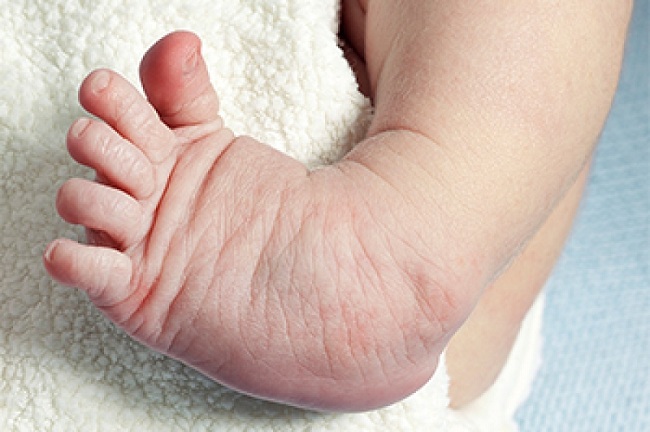The Executive Director of the Positive Care Development Foundation, Dr. Esse Nwakanma, says that contrary to the opinion of many people, club foot, an inborn condition in children, is more common than many people realise but treatable especially when diagnosed early.
Dr Nwakanma, who spoke on a webinar by the Plan Health Advocacy and Development Foundation to raise awareness about clubfoot in children and to mark 2024 International Children’s Day, said clubfoot is one of the most common congenital limb deformities that affect approximately 1 in 1000 live births worldwide.
According to her, clubfoot is not a punishment, a curse, or a bad omen, but a treatable condition in 95 percent of cases through gentle manipulation, casting, and often a minor surgical procedure.
“This involves a series of casts to reposition the foot, followed by a brace worn at night for 23 hours every day after correction for the first three months, then subsequently worn only at night for 4 to 5 years.
“Club foot is more common than many people realize. Many people had a lot of assumptions that it was more prevalent in the northern part of Nigeria. But clubfoot is everywhere. We are pursuing this because we have free treatment for all clubfoot children, and it’s treatable, and that’s why we are here to debunk all the myths that we have about clubfoot.
“Now, clubfoot is assumed to be a punishment, a curse, or a bad omen. It has denied children access to free treatment. It is believed that it is a punishment or curse from a higher power. This misconception sometimes leads to feelings of guilt and shame among parents and caregivers who are less informed.
“It is a congenital condition that occurs during foetal development. It cannot be spread through physical contact or proximity to someone with a bad foot. So, we need more people to join hands to dispel this myth and prevent unnecessary social isolation for affected individuals. Because this will equally deny children access to free treatment as well as the treatment process that can result in a relapse.”
Mrs Oluwaponmle Fabiyi, the manager in charge of the Club Foot and Orthotrauma Clinic at the Lagos State University Teaching Hospital (LASUTH), stated that the abnormal position of the foot can be detected through ultrasound by 20 weeks of pregnancy.
She started by saying that the treatment of clubfoot, which sometimes occurs in babies because of a genetic abnormality, as a result of crowding in multiple pregnancies, neurological defects, and other factors, requires full involvement and the buy-in of the parents to be effective.
“The challenge we have here is the non-adherence of the parents to the wearing of the braces. They find it cumbersome. Some of them don’t cooperate. Some will remove the braces, saying friends are mocking them or because of minor disagreements at the immunisation centre.”
The Executive Director of the Plan Health Advocacy and Development Foundation, Mr Obatunde Oladapo, stated that studies have shown that more black children compared to white children have clubfoot due to poor access to healthcare services and their inability to afford treatment.
He urged pregnant women to ensure they met their prenatal care appointments so that the condition can be detected during routine ultrasound scans during pregnancy, parents can be adequately counselled, and their minds can be well prepared to correct the defect as early as possible after the child is born.
Read Also: 5 benefits of setting healthy boundaries
